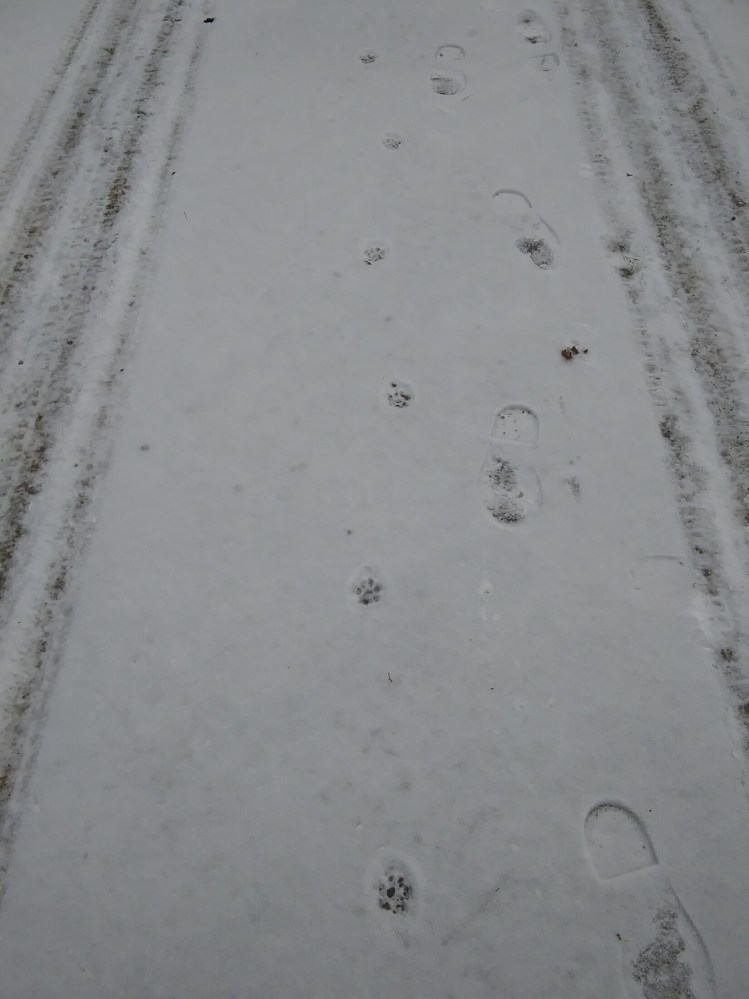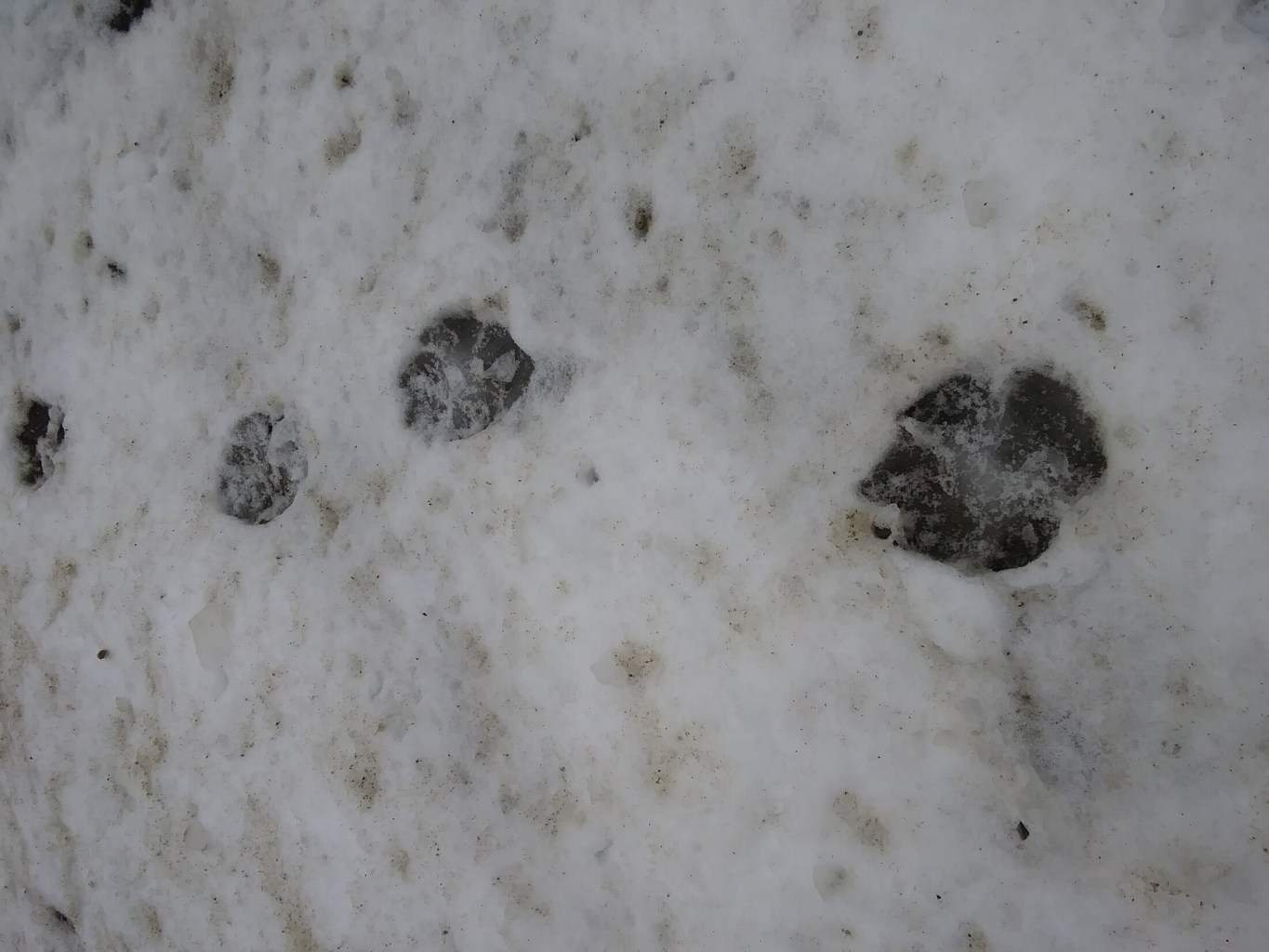For a few days earlier this month, the driveway ice was covered about an inch deep with dry, powdery snow. As I made my lumbering way up through its red and blue sun glints on one of those mornings to get the paper, I saw my footprints were tracking along neatly beside all kinds of other feet.
One of the cats had padded across to the garage an hour or two earlier. Farther down, under the ancient white pine, a rabbit had hopped hind feet by front from woods right to woods left. Sometime before or after that, a mouse or vole — or some such miniature — left its little wispy slips in the dusty snow. Wild turkeys had come through, three-toed; deer had driven in their cloven hoofs on their regular route. Echoes in the snow.
Before the brook, somebody bigger than a house cat had padded from the east, making a straight line of slightly offset marks for 40 or 50 feet, then turned into the woods west. Who was it? I took some photos and shipped them along by invisible electronic channels to some outdoorsmen who know far more about this than I do. A little debate ensued about whether it might have been a coyote, or a red fox, or finally, most likely, a bobcat.
Bobcat!
“It is remarkable,” Thoreau says in “Walden,” “how many creatures live wild and free though secret in the woods.”
Secret, in there, and dangerous. A few days later there were tracks swollen in the slush that almost certainly belonged to a coyote that had made its way along the side of the road by the mailbox. The neighbors’ wildlife camera filmed a blur they thought was probably a fisher. I’ve followed bear tracks up the hills in back.
Echoes of a whole other world inside the woods. Sometimes you can even hear it. Coyotes howling at night, leaving what amount to tracks on the air. The roaring snorts of what must have been a moose just west of the back door. A screech so alien I can’t even guess who it was out there in the dark.
Beyond the tree line in the snow-frozen wreck of a February afternoon, we watched three deer browse bare birch and fallen firs. They moved in silence like apparitions seen through the back door glass, darkly. Later I saw their scat and knew they were real.
I wonder if winter is like a long, hunger-ridden dream to unseen coyotes and barely real deer. In the stove-warm living room, you can only imagine.
“A transient acquaintance with any phenomenon is not sufficient to make it completely the subject of your muse,” Thoreau wrote exactly 160 Februaries ago. “You must be so conversant with it as to remember it and be reminded of it long afterward, while it lies remotely fair and elysian in the horizon, approachable only by the imagination.”
In July we forget how naked the woods are in February, and cold. How we stay inside and read, and listen for echoes.
Feb. 13, 1859: “The old ice is covered with a dry, powdery snow about one inch deep, from which, as I walk toward the sun, this perfectly clear, bright afternoon, at 3.30 o’clock, the colors of the rainbow are reflected from a myriad fine facets. It is as if the dust of diamonds and other precious stones were spread all around. The blue and red predominate.”
A day or two ago I heard the gargling, wheezing whir of a chickadee sounding its alarm, the first sense of his presence in a long time. Blue jays have been squalling in the woods too, after extended absence.
There are worlds within worlds, to quote another philosophy of reality. Winter’s project is to listen, and track them.
Dana Wilde lives in Troy. You can contact him at naturalist1@dwildepress.net. His recent book is “Summer to Fall: Notes and Numina from the Maine Woods.” Backyard Naturalist appears the second and fourth Thursdays each month.
Send questions/comments to the editors.




Comments are no longer available on this story